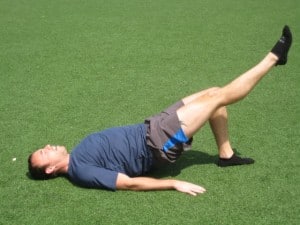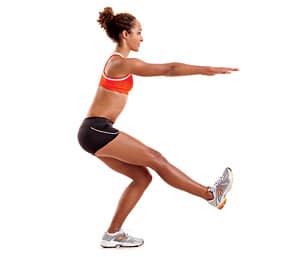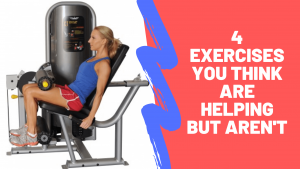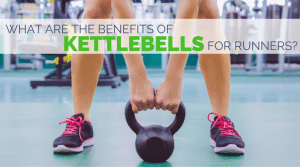As a high school track and field coach, I get to work with athletes with a huge range of abilities. Some are very talented and naturally strong, able to take to any new sport or form of exercise with ease, while others are somewhat uncoordinated and weak when it comes to general strength and athleticism.
Surprisingly, good runners come from both groups!
In past articles, we’ve looked at how important core strength is to having good running form and avoiding injuries, particularly to the knee.
Strong evidence exists that connects poor strength and coordination in the hip stabilizer muscles to IT band syndrome and patellofemoral pain syndrome or “runner’s knee,” two injuries that are quite common both in recreational runners and the high schoolers that I coach.
Two tests for hip strength and stability
Since the effect of hip strength on your running mechanics is a combination of strength and muscle activation, it can sometimes be tricky to assess both. You can be strong, but not quite coordinating your hip muscles right, or you can simply lack hip strength entirely—both can increase your risk of injury.
Fortunately, with the help of some scientific research, I’ve been able to identify two tests for hip stability and strength that are quite good at identifying the kinds of deficits that can lead to knee injuries.
In my own informal testing with my high school athletes, these tests have been pretty good at indicating who’s at risk for knee injuries and what the source of the problem is in runners who’ve already got ITBS or runner’s knee.
Test 1: The Glute Bridge
The first is a test for hip strength. By doing a “glute bridge” exercise, then slowly lifting up one leg, putting it down, and then lifting up the other, you can check how stable your pelvis is when it must be supported by your hip abductor and external rotator muscles.

In strong, healthy runners (particularly those who do hip strength exercises often), the pelvis will barely move when you lift up one leg. But in runners with hip strength deficits, there will be a marked “dip,” with the pelvis tilting down on the unsupported side. This is easy to spot by yourself, but can also be confirmed by an observer.
What’s the evidence for this exercise?
A 2013 study by David Selkowitz, George Benneck, and Christopher Powers identified the single-leg glute bridge as one of the best exercises for hip stability, meaning it directly stresses your hip abductors and external rotators while minimizing the activation of other muscles which can help you “cheat” while stabilizing the hip.
And the static (or “isometric” in sports-science circles) nature of the exercise mimics the static portion of the running stride where your hip is supported by one leg.
As we’ve seen in previous articles, your hip will also dip to one side when you are running if you’ve got weak hip muscles—a phenomenon informally called “hip drop”—but it’s harder to see by yourself.
Test 2: Single Leg Squats
The second test evaluates the coordination of your hip stabilizer muscles during a dynamic activity. For this test, simply do five or 10 single-leg squats, being sure to keep your torso upright and your knee about even with your toes.

While you are doing these squats, glance down at your knee. Is it pointing straight ahead, or is it buckled or rotated inward? If your hip stabilizers are weak, or if they simple aren’t very well coordinated, you’ll find these single leg squats quite difficult to do without allowing your knee to wobble around or buckle inward.
What’s the evidence for this exercise?
Biomechanical research has connected the same mechanical motions observed in poorly-done single-leg squats (an unstable, wobbly, or inward-buckled knee) with knee injuries.
- A 2011 study by Reed Ferber and colleagues at the University of Calgary found that runners with patellofemoral pain syndrome displayed significantly reduced variability in knee mechanics—basically, less “wobble” at the knee—after completing a hip strengthening program, and a 2010 study also headed by Ferber, this time with colleagues at a number of universities, connected excessive knee internal rotation and hip adduction in women (an “inward-buckling” knee) with IT band syndrome.
- Another 2011 study by Crossley et al. directly tested the single-leg squat as a measurement of hip muscle function.The researchers had 34 healthy patients perform single leg squats, with three different clinicians rating each subject’s squats as “good,” “fair,” or “poor.” The classifications between each evaluator were quite reliable, and more so, these findings correlated very well with direct measurements of hip muscle activation and strength using electromyography and dynamometers: those who had good hip strength and activation tended to be able to perform single-leg squats quite well, and those with deficits struggled with the single-leg squats.
RunnersConnect Bonus
Download your FREE Hip Strengthening Exercises Guide.
Download a video version of the 5 most effective hip exercises for runners. You’ll get full descriptions on how to perform and a video to help guide you.
Final message
You might find that you can manage the glute bridge pretty well, but struggle with single-leg squats. This likely means that you’ve got sufficient static hip strength, but not enough coordination to sustain hip stability during the dynamic parts of the running stride, as your foot hits the ground and your knee bends to absorb the impact. Or, you may struggle with both.
I haven’t seen anyone yet who’s been able to do single-leg squats, but struggles with the glute bridge, though it’s certainly possible.
But the best part about these two tests for hip strength is that they also function as good exercises to improve it! Whether you struggle on one, both, or neither of these tests, they are both good exercises to improve hip strength and coordination, hopefully preventing or at least reducing your risk for knee injuries.
If you decide you want to be more aggressive in your approach to hip weakness or instability and injury-prevention, we’ve put together an extensive program of running-specific hip, core, and general strength routines.
The Bia, Atlas, Apollo and Ares routines not only improve hip and core strength, but will help you improve stability and range of motion. You can pick them up here.
There is also a great post by Rigor Fitness on pistol squats if you need more exercises to add to your routine.





3 Responses
John,
Do you know of any research that has directly correlated amount of knee movement in a single leg squat with knee movement while running?
Pete
Hello Pete,
While performance on single leg squats is a good indicator of hip muscle strength, and hip muscle strength is also related to knee movement while running (not to mention injury!), the relationship is not perfectly one to one, probably because of the effects of neuromuscular coodination. Richard Willy and Irene Davis did a study in 2011 which actually showed hip strengthening alone improves single leg squat mechanics and hip strength but not their measurements of knee mechanics while running (http://www.ncbi.nlm.nih.gov/pubmed/21765220), hence advocating for the kind of neuromuscular reeducation that Davis is working on now. But some of their earlier work did find that females with PFPS have abnormal hip mechanics both while doing squats and while running (http://www.ncbi.nlm.nih.gov/pubmed/17942202), and the Ferber, Kendall, and Farr article I cited in the article above found the opposite: hip strengthening does improve mechanics, in their view. While Ferber et al. don’t use the single-leg squat as part of their rehab protocol, the study still is a good example of hip strength affecting hip mechanics, and also highlights the importance of variability stride-to-stride, something that you could miss if you only looked at peak angles like the Willy/Davis study.
—John
Hi. Thank you for a this very useful article, this is what makes the internet great. I have struggled with itbs since december from to much mileage to soon. Since then Ive made a lot of core hip strength routines also with rubber band. I have made some improvements an can do a 10k pain free if I rin cast and focus. If I run slow and leisurly pain comes creeping at about 5-8k. I think my right foot toes point slightly inwards when I get tired.
When I do Test 2 my loaded knee wobbles all over the place. I will keep doing this exercise. This has potential.